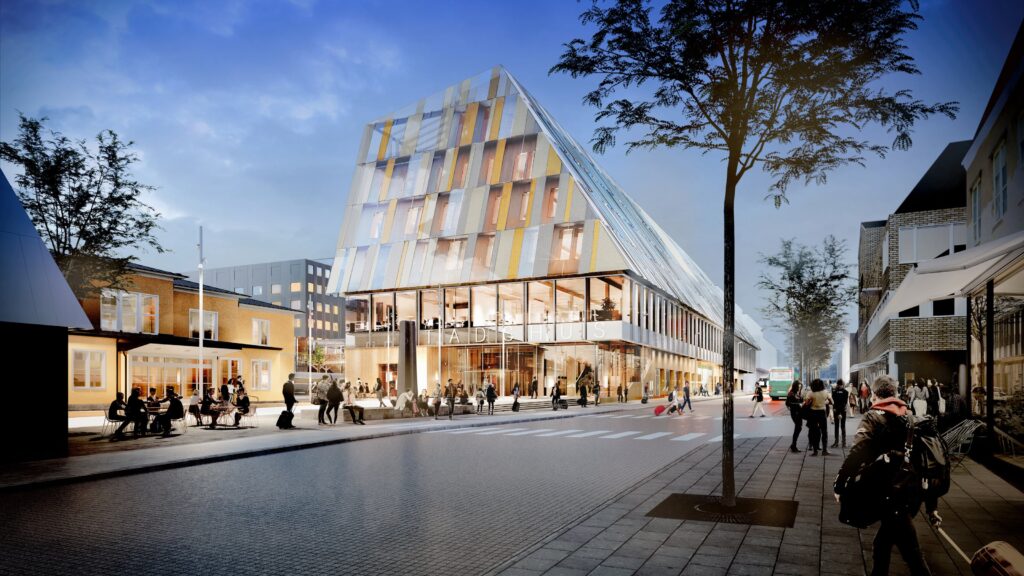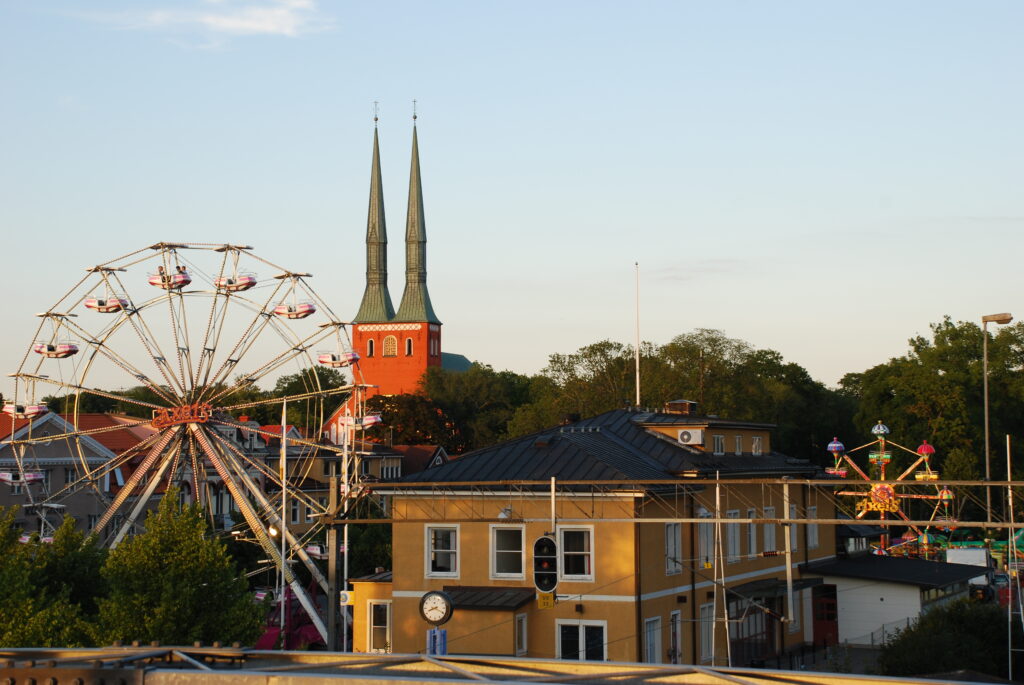Växjö is a city and the seat of Växjö Municipality, Kronoberg County, Sweden. It had 66,275 inhabitants (2016) out of a municipal population of 90,721 (2017). It is the administrative, cultural, and industrial centre of Kronoberg County and the episcopal see of the Diocese of Växjö. The town is home to Linnaeus University.
Environmental policy
In 1996 the city adopted a policy for the elimination of the use of fossil fuels by 2030. This decision was taken in reaction to pollution and eutrophication in the lakes that surround the town. Greenhouse gas emissions were cut by 41% from 1993 to 2011, and were reduced by 55% by 2015. The city’s economy has grown during this time.
By 2014, Växjö’s CO2 emissions had dropped to 2.4 tonnes per capita, well below the EU average of 7.3 tonnes.
The Greenest City in Europe
Växjö has called itself “The Greenest City in Europe” since 2007. It has its foundation in a long history of commitment to environmental issues, and ambitious goals for a green future. It is a vision shared with the citizens and the local companies.
In 2017 Växjö was awarded the European Green Leaf Award 2018 by the European Commission. The prize is awarded to cities with less than 100 000 inhabitants that show good results and ambitions in terms of environment and are committed to generate green growth.
Historic buildings
Växjö Cathedral is located near the centre of the city.
Immediately north of Växjö is Kronoberg Castle, a ruined fortress constructed in the 15th century. This castle was used as a base by the rebel, Nils Dacke, during the Dacke War. The fortress has thick walls and artillery portals that face north towards lake Helgasjön.
Teleborg Castle is also located near the city. It was built near the Linnaeus University in 1900, it now functions as a hotel and conference facility.
Amenities
The Swedish Emigrant Institute was established in 1965 and is housed in the House of Emigrants near Växjö Lake in the heart of the city. It contains archives, a library, a museum, and a research center relating to the emigration period between 1846 and 1930, when 1.3 million (or 20%) of the Swedish population emigrated, mainly to the United States. Archives dating to the 17th century contain birth and death records, as well as household records, that are available on microfiche.
Since 2016, Fortnox Arena has held a video game speedrunning event in July. The event aims to raise money for the Save the Children charitable foundation. Over 400 attendees were expected to turn up for ESA in 2017.
Industry
Industries include GE Power and Aerotech Telub, as well as Volvo Articulated Haulers which is located in Braås 29 kilometres (18 miles), north of Växjö. One of the best-known service providers is Fortnox and Visma. Växjö houses Sweden’s National Glass Museum and claims to be the capital of the “Kingdom of Crystal” as well as of the “Kingdom of Furniture“.
Education
The city has three municipality-run secondary schools (“gymnasiums”): Teknikum, Katedralskolan, and Kungsmadskolan. Linnaeus University had a student body of 42,000 students as of 2012 (including its Kalmar campus) or 15,000 students (full-time equivalents) as of 2010.
History
In contrast to what was believed a century ago, there is no evidence of a special pre-Christian significance of the site. The pagan cultic center of Värend may have been located at Hov, a nearby village.
An episcopal see since the 12th century, the city did not get its city charter until 1342, when it was issued by Magnus Eriksson. The cathedral of St Sigfrid dates from about 1300, and has been subsequently restored. Otherwise, during the Middle Ages, Växjö did not have many pious institutions. A Franciscan monastery was established in 1485. A hospital of the Holy Ghost was first mentioned in 1318. In the 14th century Växjö got its first school, Växjö katedralskola. In 1643 it received gymnasium status.
At the beginning of Gustav Eriksson’s war of liberation, the peasantry joined forces, under the guidance of the union-hostile bishop Ingemar Pedersson, with the mountain men and peasantry of Dalarna, Hälsingland, and Gästrikland, who urged fidelity to their leader Gustav Eriksson. During the Dacke War, a peasant uprising, the city was under the authority of Nils Dacke and his supporters from the summer of 1542 until after New Year 1543.Växjö surrounded by lakes as seen from an aeroplane moving between Norway and Poland. West is up in the image.
Several times during the Northern Wars and the Scanian Wars, and thereafter, the city was affected by fire (in 1277, 1516, 1570, 1612, 1658, 1690, 1749, 1753, 1799, 1838 and 1843). After the last fire in 1843, when 1,140 citizens were rendered homeless, Växjö received its current street plan.
Modern times
The Barbarella nightclub was opened in the 1970s. Växjö is the city in which the photograph “A Woman Hitting a Neo-Nazi With Her Handbag” was taken in 1985 by Hans Runesson [sv].
In its December 2015 report, Police in Sweden placed the Växjö district Araby in the most severe category of urban areas with high crime rates. During 2015 Växjö suffered a series of arson incidents.




